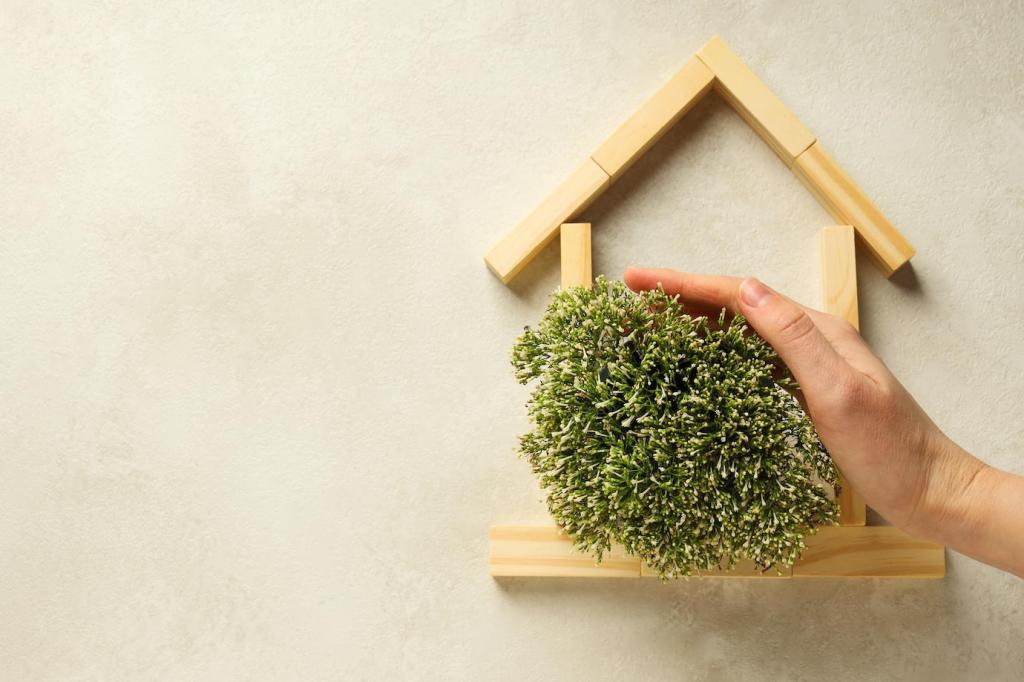Eco-friendly materials are transforming the home renovation industry by providing sustainable, cost-effective, and healthier alternatives to conventional building materials. Renovating with the environment in mind means choosing resources that use less energy, generate minimal waste, and provide long-term benefits to homeowners and the planet. This page explores the latest advancements, choices, and methods for integrating eco-friendly materials into home renovations, demonstrating how these solutions create stylish, functional spaces without compromising responsibility to the environment.
Understanding Eco-Friendly Building Materials
Defining Eco-Friendly Materials
The term eco-friendly refers to materials that are manufactured, sourced, and used in ways that have a lower impact on the environment compared to conventional options. This can mean they are sourced from sustainably managed resources, have low levels of toxic emissions, or are easily recyclable at the end of their life cycle. When selecting eco-friendly materials for a home renovation, factors such as the carbon footprint of production, the distance the material has traveled, and its long-term safety for inhabitants are all key considerations. Eco-friendly does not only imply the absence of harm but often brings additional health, durability, and cost-saving advantages.
The Importance of Choosing Wisely
When undertaking a home renovation, every material choice has an environmental impact—both immediately and in the long term. Opting for sustainable materials reduces resource depletion, lowers energy consumption, and minimizes landfill waste. What’s more, eco-friendly choices often provide better indoor air quality due to their low levels of volatile organic compounds (VOCs) and fewer toxic ingredients. Awareness and careful selection are crucial for homeowners who want to make responsible, informed decisions that benefit their families and future generations.
Myths About Green Materials
Despite growing interest in sustainable renovation, misconceptions persist. Some believe eco-friendly materials are prohibitively expensive, less durable, or limited in appearance. However, innovation in the building industry has produced a wide range of attractive, affordable, and long-lasting green options. Many traditional materials can even be outperformed by their sustainable counterparts in key areas like insulation, moisture-resistance, and ease of maintenance. Breaking down these myths encourages more homeowners to explore eco-friendly options confidently.
Innovative Flooring Options
01
Bamboo: The Fast-Growing Favorite
Bamboo flooring is a leading choice for eco-conscious homeowners due to its incredibly fast growth rate and renewable nature. Unlike traditional hardwoods, which may take decades to mature, bamboo can be harvested within a few years. Its strength rivals that of hardwood and, when processed using non-toxic adhesives and finishes, bamboo provides a sleek, modern look that complements many design styles. Its sustainable harvesting practices and low need for pesticides make it both environmentally and health-friendly, providing an attractive alternative to traditional floors.
02
Cork: Comfort Meets Sustainability
Cork comes from the bark of the cork oak tree, which regenerates after harvesting without harming the tree itself. This unique property makes cork a renewable resource, making it a standout in sustainable flooring. Cork floors are cushioned, quiet underfoot, and naturally antimicrobial—bestowing comfort and health benefits in equal measure. Its ability to insulate and absorb sound makes cork well-suited for bedrooms, offices, and living spaces. With a range of colors and patterns now available, cork has evolved into a versatile, green solution for stylish interiors.
03
Recycled Materials: Upcycled Aesthetics
Flooring made from recycled materials, such as reclaimed wood or recycled glass tiles, showcases sustainability through creative reuse. Reclaimed wood carries the charm of history while reducing demand for new timber. Recycled glass offers vibrant patterns, reflecting light and creating a unique, eye-catching finish. These options keep valuable resources out of landfills and breathe new life into materials that would otherwise be discarded. They also allow homeowners to express individuality while adhering to green building principles.
Sustainable Wall Solutions
Low-VOC Paints: Cleaner, Safer Spaces
Traditional paints release volatile organic compounds (VOCs) that contribute to indoor air pollution and may cause health issues over time. Low-VOC and zero-VOC paints have been developed to significantly reduce or eliminate these emissions, making indoor spaces safer and more comfortable. These paints cover just as well and last as long as conventional options, and now come in a vast array of color selections for any style. Choosing low-VOC paints is a simple step with a significant impact on household health and the environment.
Natural Plaster and Clay Walls
Natural plasters and clay walls are gaining popularity for their sustainability and visual warmth. Made from earth-based materials, these wall finishes are free from synthetic additives and regulate humidity by absorbing and releasing moisture. Natural plasters add texture and depth to interiors, creating elegant, timeless looks. Their inherent resistance to mold and mildew, coupled with their biodegradable nature, makes them both practical and kind to the environment.
Salvaged and Reclaimed Wall Materials
Incorporating salvaged materials into wall designs—such as weathered wood, bricks from demolished buildings, or reclaimed metal panels—turns construction waste into design assets. These materials tell stories of their previous life while reducing demand for new resources. Their unique patina and characteristics can become focal points within any room, marrying environmental stewardship with personal, distinctive interior style. Creative reuse in wall design proves that sustainability can be both responsible and striking.
Sheep’s wool is a natural and highly effective insulator, prized for its ability to regulate humidity and resist mold. Unlike traditional fiberglass, wool insulation poses no threat to respiratory health during installation and naturally repels pests. Sourced from renewable flocks, wool insulation is biodegradable at the end of its lifespan. Its sound-absorbing properties and excellent heat retention make it an outstanding option for those seeking comfort, efficiency, and eco-friendliness.

Previous slide
Next slide

Health and Indoor Air Quality
Formaldehyde-Free Cabinets and Furniture
Many conventional cabinets and furnishings are manufactured with adhesives that off-gas formaldehyde, a chemical linked to respiratory issues and other health problems. Eco-friendly alternatives offer formaldehyde-free or low-emission options using safer adhesives and materials. These products are increasingly available without sacrificing style or affordability. Their use ensures that indoor air remains clean and safe, especially important in spaces where families and children spend most of their time.
Non-Toxic Flooring Adhesives and Finishes
The adhesives and finishes used with flooring can emit harmful fumes long after installation. Eco-friendly alternatives utilize water-based or plant-derived ingredients that release little to no VOCs. These products offer the same durability, sheen, and protection as their chemical-laden counterparts, without compromising indoor air quality. Non-toxic finishes are widely available for use on all types of eco-friendly flooring, allowing homeowners to embrace sustainability at every layer.
Enhanced Ventilation for Healthier Homes
Incorporating sustainable materials goes hand-in-hand with improved ventilation strategies to maximize indoor air quality. Properly designed ventilation systems remove airborne contaminants, regulate humidity, and bring in fresh air for healthier living. Energy-efficient heat recovery ventilators (HRVs) ensure that homes remain comfortable without sacrificing efficiency. By pairing green materials with thoughtful ventilation, indoor environments become safer, fresher, and more enjoyable year-round.

Water Conservation in Home Renovations
Low-flow faucets, showerheads, and toilets are engineered to use significantly less water while maintaining the pressure and efficiency that homeowners expect. These fixtures often feature aerators and advanced mechanics to deliver the same experience as regular models with a fraction of the water usage. Adopting low-flow fixtures is one of the easiest and most impactful ways to make a home renovation eco-friendly and reduce long-term water consumption.
